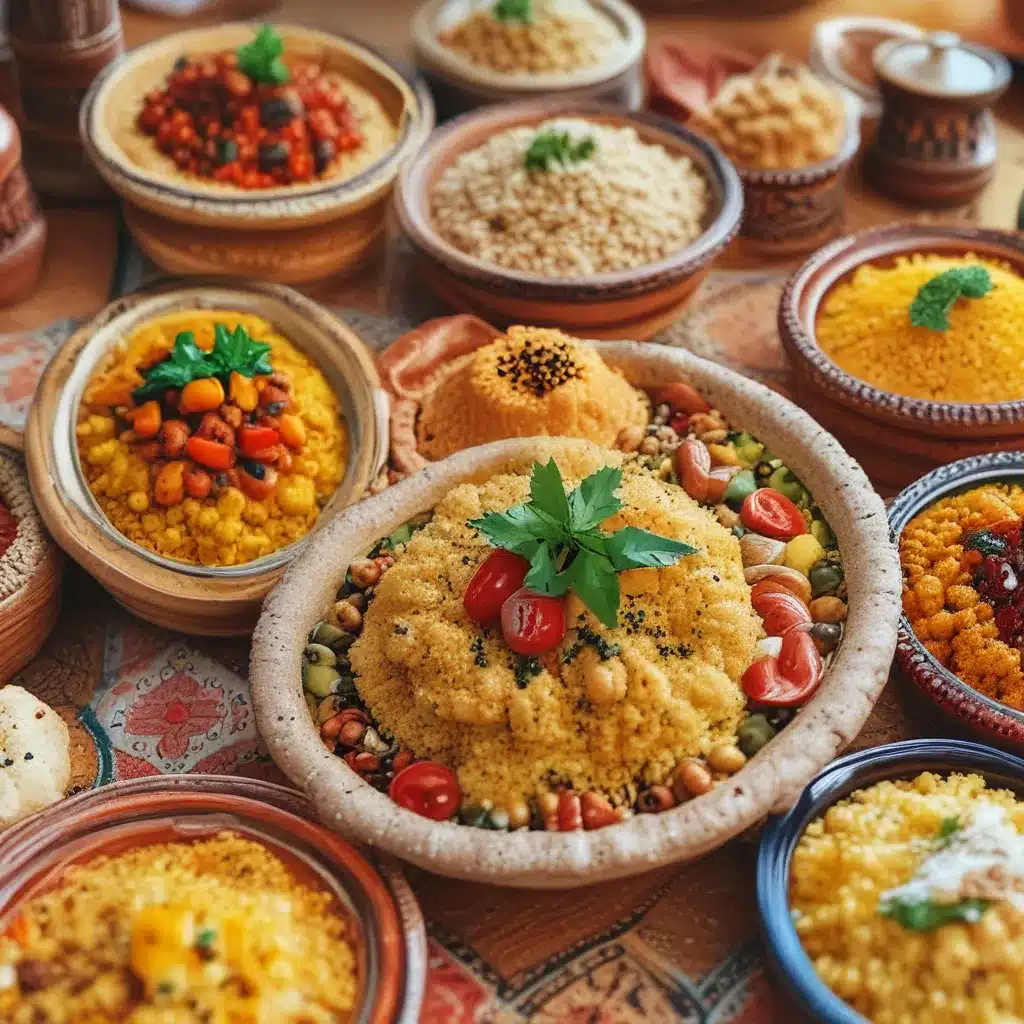
Discovering the Rich Culinary Traditions of Morocco
As I step into the warm, aromatic atmosphere of El Bahia, a Moroccan restaurant nestled in the heart of New York City, I can’t help but feel a wave of nostalgia wash over me. The vibrant colors, the intricate tilework, and the gentle hum of conversation transport me back to the bustling streets of Marrakech, where I spent countless hours exploring the wonders of Moroccan cuisine.
El Bahia is more than just a restaurant; it’s a gateway to the vibrant culinary heritage of Morocco, and today, I’m here to embark on a journey through one of the country’s most iconic dishes: couscous.
Understanding the Roots of Moroccan Couscous
Couscous, a staple in Moroccan cuisine, is a semolina-based pasta that has been a part of the country’s culinary landscape for centuries. Its origins can be traced back to the Berber people, who have long been the custodians of this beloved dish.
As I delve into the history, I learn that couscous was traditionally prepared using a special tool called a couscoussier, a two-tiered pot designed specifically for this purpose. The bottom tier would hold the stewed meat and vegetables, while the top tier would steam the couscous to perfection, allowing the flavors to mingle and create a harmonious symphony on the palate.
Mastering the Art of Couscous Preparation
While the couscoussier is the traditional method of preparing couscous, I discover that there are alternative techniques that can yield equally delightful results, as shared by Salima’s Kitchen. Salima’s recipe highlights the importance of adding a drizzle of olive oil to the cooking water, which helps to create the light and airy texture that is so characteristic of well-prepared couscous.
But the true magic, I soon learn, lies in the attention to detail and the love poured into the dish. Salima’s family in Morocco has been making this couscous every Friday as a way to gather together and pray, a ritual that has been passed down through generations. It’s this dedication and reverence for the dish that truly sets Moroccan couscous apart.
Exploring the Flavors of Moroccan Couscous
As I settle in at one of the cozy tables at El Bahia, the first bite of the couscous dish immediately transports me. The perfectly fluffy couscous is crowned with a medley of tender vegetables and a flavorful broth that’s been simmered to perfection.
The combination of spices, including cumin, cinnamon, and paprika, creates a depth of flavor that is both comforting and exotic. The addition of chickpeas and raisins adds a delightful contrast of textures, while the succulent lamb or chicken provides a satisfying protein component.
According to Legal Nomads, the preparation and ingredients in Moroccan couscous can vary depending on the household or restaurant, but the essence remains the same: a beautifully balanced dish that showcases the country’s rich culinary heritage.
Embracing the Communal Spirit
As I savor each bite, I’m struck by the communal nature of this dish. Traditionally, Moroccan couscous is served on a large round platter, with everyone gathering around to enjoy the meal together. It’s a moment of shared experience, where family and friends come together to not only nourish their bodies but also their souls.
I can almost picture the scene, as described by Salima: My grandma and dad using their hands to combine the vegetables with the couscous, working it into a large golf ball-sized ball that they would then pop into their mouths. The memory of my grandmother simmering a spicy broth on the side, for the brave guests to try, fills me with a sense of warmth and wonder.
Variations and Adaptations
While the traditional Moroccan couscous is undoubtedly a masterpiece, I discover that there are numerous variations to explore. Spice Box Travels shares a delightful recipe for Chicken Tagine with Moroccan Bread Khobz, which perfectly complements the couscous dish.
I also learn that the vegetables and broth can be stored separately from the couscous, allowing for easy meal prep and enjoyment of leftovers for up to five days. This flexibility is a testament to the versatility of this beloved dish.
A Culinary Journey Through Morocco
As I prepare to leave El Bahia, I can’t help but feel a deep appreciation for the rich culinary traditions of Morocco. Couscous, with its intricate preparation and heartwarming communal aspect, has become a testament to the country’s dedication to preserving its cultural heritage.
Through this exploration, I’ve not only discovered the flavors of Morocco but also the stories and traditions that make this dish so special. It’s a reminder that food is not just sustenance, but a means of connecting with one another and celebrating the diversity of our world.
As I step out into the bustling streets of New York City, I know that I’ll carry the essence of Moroccan couscous with me, ready to share its warmth and wonder with anyone who is willing to embark on this culinary journey.


